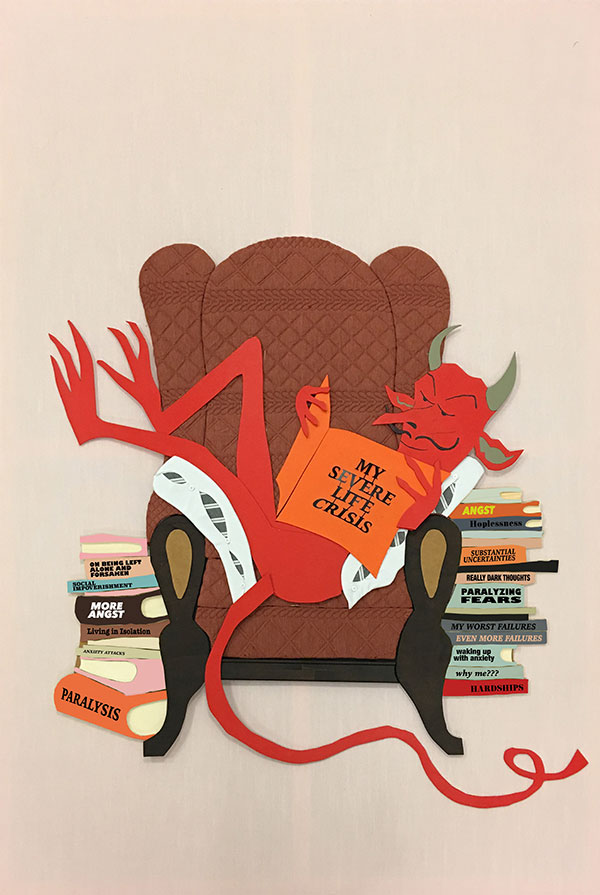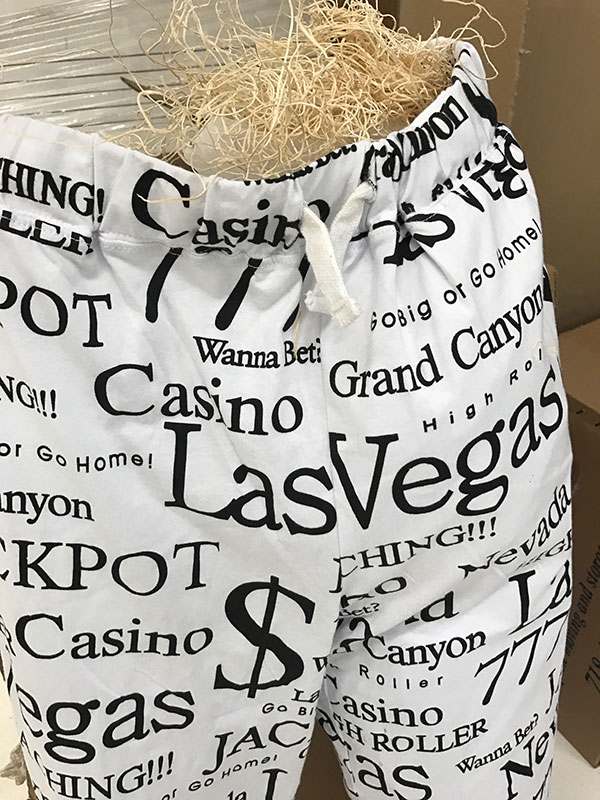What to See at DC Open and Okey-Dokey II
The best shows in Düsseldorf and Cologne for the 10th anniversary of DC Open and 2nd edition of the Okey-Dokey gallery-share
The best shows in Düsseldorf and Cologne for the 10th anniversary of DC Open and 2nd edition of the Okey-Dokey gallery-share

Natalie Häusler, ‘Honey’
KIT (Kunst im Tunnel), Düsseldorf
23 June – 23 September
At KIT, an unused tunnel under the Rhine, Natalie Häusler makes use of the special spatial situation to create a kind of idyllic underwater garden. The central work is the 10-metre long Kneipp basin Bethsabée reste au bains ((Bathsheba at her Bath, 2018), whose outer tiles make up a text that can be read by walking round the basin several times. But the story can also be followed on headphones: the artist has rewritten the biblical story of Bathsheba and David to give the woman an active role in rejecting the horny voyeuristic King. Loving the motor-cycle (2017) also speaks of the difficulty of obsessions. Visitors sit on a stationary Honda racing bike listening to a kind of podcast in which Häusler and a friend talk about her friend’s young daughter who has a fascination with motorbikes, at the same time as being insanely scared of them. I won’t give away whether or not little Ada overcomes her fear. Suffice to say that even in the garden of desire, every rose has its thorn.

Julien Ceccaldi, ‘Solito’
Kölnischer Kunstverein, Cologne
8 September – 11 November
For the first exhibition under new director Nikola Dietrich, the venerable Kölnischer Kunstverein presents ‘Solito’ by Julien Ceccaldi , named after the main character in Ceccaldi’s longest manga to date that is being launched at the opening. A late bloomer, 30-year-old Solito is a sex-obsessed virgin still living with his parents. Anyone familiar with Ceccaldi’s oeuvre will not be surprised that Solito indulges in angst-ridden sexual excess – until, finally, he falls in love with death, who appears as a soldier. The exhibition itself is a kaleidoscope of individual characters and scenes from the comic. The windows down one side of the sculpture hall are hung with painted PVC curtains reproducing sentences from the story in black and saffron yellow. The shape of the windows create comic-like panels, but here they obey no narrative logic. In the hall itself, a wrought iron bed stands as a gateway to this world of (wet) dreams, featuring three skeletal sculptures, acting as a necessary crutch to this amusing contemporary and gendered variation on the theme of ‘death and the maiden’.

Gunter Reski, ‘Organ Migration Now’
Galerie Nagel Draxler, Cologne
8 September – 20 October
Nagel Draxler is back in Cologne at last, having moved into Markus Luettgen’s old premises on Elisenstrasse, showing works by the old warhorse and commentator on painting Gunter Reski. The walls of the exhibition are plastered with texts and pictures, creating the format of a gigantic wall newspaper – a private work created every day by a person who hardly ever leaves the house, if the work’s text is to be believed. In Reski’s case, this display makes perfect sense, as the written word is essential to his engagement with painting, featuring in many of his pictures. In Reski’s first exhibition with the gallery, not unlike Ceccaldi’s, the pictures are to be understood as a loose illustration of experiences of a fictional author. Three pictures of dust bunnies in particular interlock nicely with the domestic observations in the text, while referring in their execution to Gerhard Richter’s cloud pictures or recent line-based abstract works by Albert Oehlen.

‘Ahhhhh! Real Monsters!’
Clages, Cologne
8 September – 20 October
So long as they don’t reside in the White House, maybe monsters aren’t so bad? The ambitious and extremely funny group show ‘Ahhhhh! Real Monsters!’ takes its cue from the 1990s cartoon series of the same name, rehabilitating monsters as a marginalized group. Entering the winding space of Clages, one is immediately struck by the works of studio mates Cosima von Bonin and Claus Richter. Von Bonin’s work Freaks (2018) is a plastic shark with a fabric torpedo between its bared teeth, while Richter contributes a devil in the form of a large-format wall-mounted work in fabric and leather (Rock Bottom, 2018). But this devil is far from terrifying, sat in a wingback armchair reading self-help books on existential crisis. As well as being good for a laugh, Richter’s work also channels the show’s main message: monsters are monsters because they are made that way by others – just ask Frankenstein’s golem. Similarly jarring is Oliver Husain’s video Galleria Cruise (2018), a confusing trip through a rundown mall in which the camera comes to rest on all manner of crazy objects from the bargain bin of civilization, evoking the magical world of the animated series (set in a rubbish bin) from which the work takes its title.

Lutz Bacher, ‘What’s Love Got to Do With It’
Kunstsammlung NRW, K21 Ständehaus, Düsseldorf
7 September, 2018 – 6 January, 2019
Entering the lobby of K21 Ständehaus in Düsseldorf, one is already in Lutz Bacher’s exhibition ‘What’s Love Got to Do With It’. A large number of surveillance mirrors (Cyclops, 27 March 2017) are installed in the hall in no particular order, their reflections segmenting K21’s already eclectic architecture. In the exhibition’s three rooms, Bacher has made another spatial intervention by stretching a broad roll of white paper with an irregular zigzagging line across all of the walls (Untitled, 1 February 2017). What looks like a seismographic trace or barbed wire is the signature of the current President of the United States, much enlarged and endlessly repeated. Handwriting is also a motif in the video work Open the Kimono (2013–18) that is shown on a large screen: an hour-long slide show of handwritten transcriptions of headlines and all manner of info trash. Like many of her fellow artists, the New York-based Bacher comments on the sad political situation in her country today. But with a witty approach, inflating her material to echo The Donald’s hyperbole.

Natalie Czech, ‘if someone came up and started talking a poem at you how would you know it was a poem?’
Galerie Kadel Willborn, Düsseldorf
7 September – 27 October 2018
Natalie Czech, who grew up not far from Düsseldorf, gains home-field advantage with her exhibition ‘if someone came up and started talking a poem at you how would you know it was a poem?’ at Kadel Willborn. The exhibition consists of two series, ‘Poet’s Questions’ and ‘Negative Calligrammes’ (both 2018), spread equally over the two halves of the gallery. While the conceptual approach in the five photographs of the first series with its hybrid of pop music and poetry feels slightly kooky, the ‘Negative Calligrammes’ are a positive affront. The photographs show printed out emails to Czech from authors including Quinn Latimer, John Holten and Julien Bismuth, filed in a pale blue folder. Alluding to Concrete Poetry and the density of figures in Mail Art, the artist has outlined domestic scenes in felt-tip pen – a couple cleaning their house or tending their plants, a venetian blind. The painted lines use only gaps, nowhere obscuring the sometimes highly personal texts. With its sleek photographic presentation, this equal status of text and drawing is a firm invitation to the high ropes of interpretation: many strands, tangles likely.

Okey-Dokey II
Delmes & Zander, Drei, Ginerva Gambino, Jan Kaps (Cologne); Lucas Hirsch, Galerie Max Mayer, (Düsseldorf)
8 September – 30 September 2018
The gallery share project Okey-Dokey, which got off to a positive start last year, has been revamped. This year’s curatorial advisor is Artists Space’s Jamie Stevens, who has hooked up young Rhineland galleries with unconventional partners: A group show at Jan Kaps features punk rock publisher Re/Search from San Francisco; Max Mayer hosts Blank Forms, a New York label for experimental music, as well as Hong Kong’s Empty Gallery, which has a programme weighted towards performance and sound art; and Ginerva Gambino is paired with Front Desk Apparatus, a research-driven art advisory service. The idea is clearly to provoke exchanges about the gallery format, which has been going through something of a crisis in recent years – at least for smaller and intermediate galleries.
There is also art, of course: Lucas Hirsch (with Piper Keys, London) is showing Manuela Gernedel’s drawings of her untidy kitchen. Even if some of this work was recently shown in London it is hard to imagine a denser rendering on paper of the conflict between being a mother and being an artist. A few streets away, Max Mayer takes a different approach with the works of the artist, composer and mathematician Catherine Christer Hennix. A standout piece among the very different works on show is the large-format diptych Algebra w/Domains (1973–91) with black, red and blue fields in a white grid, looking like an exciting cross between neo-plasticism, modular music and intuitionist mathematics.
While all the shows offer unusual material, of particular note is the presentation at Drei (with Southfirst, NY) showing works by Patricia L. Boyd, Leslie Thornton, Julia Scher and Tobias Madison, which might be said to combine machinism with narcissism. Especially Thornton’s video Jennifer, Where Are You? (1981), in which a small girl experiments with lipstick and matches to a soundtrack of dramatic piano music while a worried father calls her name, makes a sustained, haunting impact. Definitely an intriguing edition, it will be interesting to seeing what direction Okey-Dokey will take next year.
Translated by Nicholas Grindell
Düsseldorf Cologne Open Galleries (DC Open) runs from Friday 7 Sep 2018 (5–9 pm), Saturday 8 Sep 2018 (11–7 pm) and Sunday 9 Sep 2018 (11–5 pm).
Okey-Dokey opens Friday, September 7th, 6–9 pm and runs until 30 September 2018.
Main image: Natalie Häusler, Bethsabée reste au bains (Bathsheba at her Bath), 2018. Courtesy: Kunst im Tunnel; photograph: Ivo Faber






















